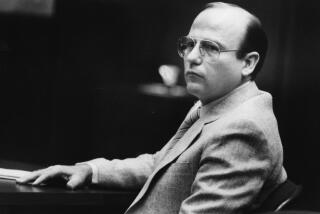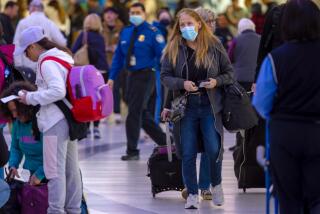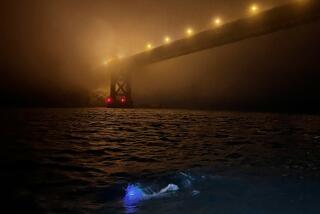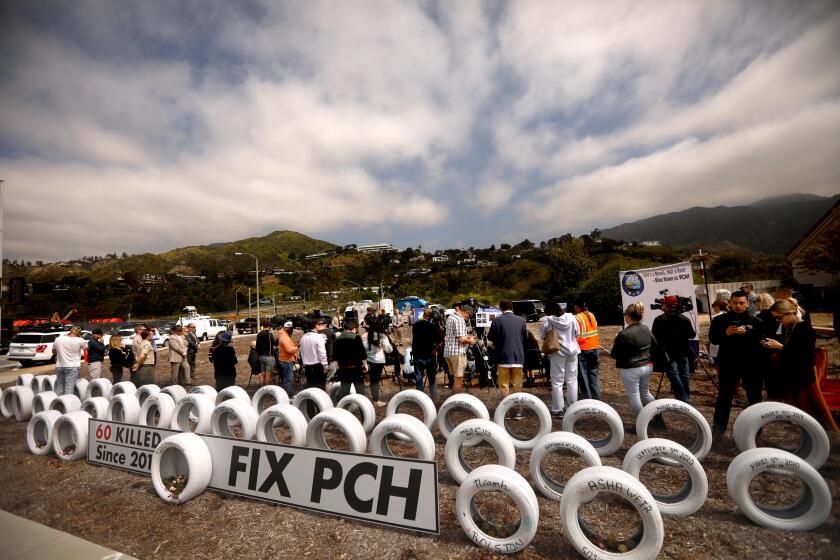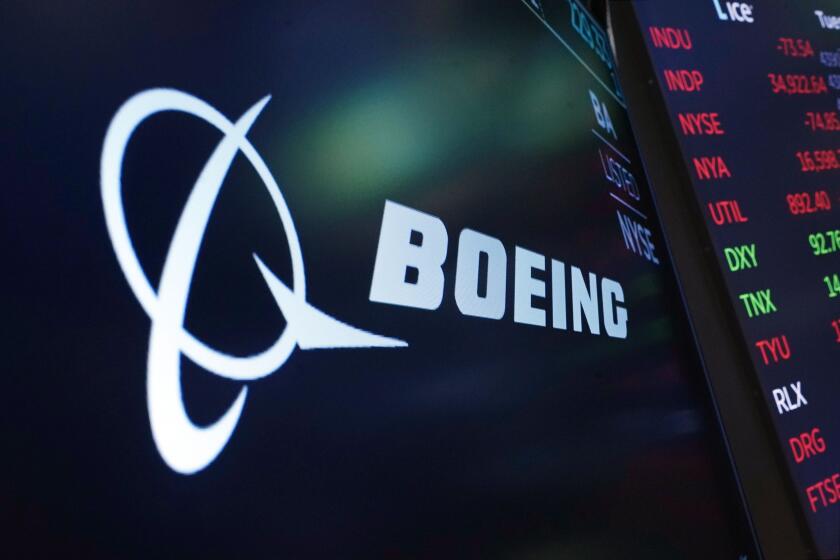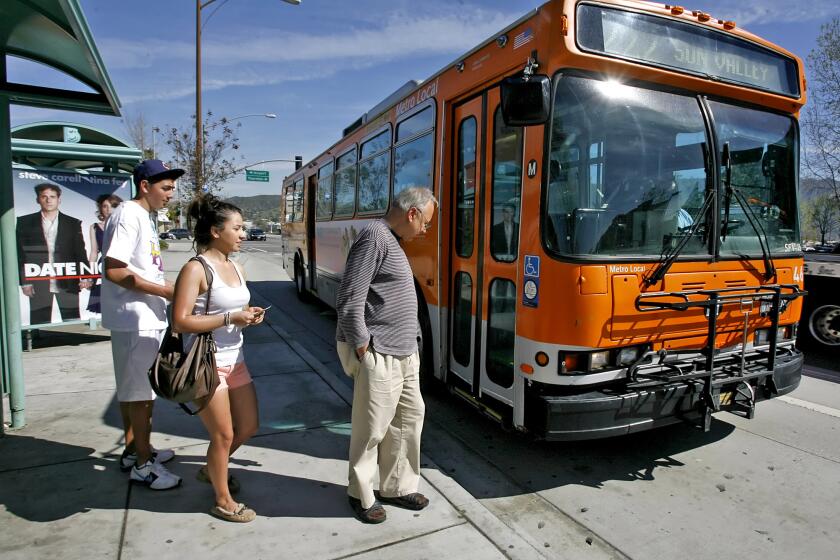Rail Safety Findings Are Disputed
A badly injured passenger and relatives of people killed in the Jan. 26 Metrolink crash near Glendale called Wednesday on state legislators to prohibit commuter railroads from having locomotives push trains from the rear, a practice that some experts say might have increased the severity of the crash.
The group disputed the findings of a recent federal study showing only a slight difference in safety between pushing and pulling trains with engines.
“My father used to say that push operations were dangerous, that they were an accident waiting to happen. What would you rather be sitting in?” said Kerri Ormiston Davis, the daughter of Tom Ormiston, a veteran Metrolink conductor who was killed in the crash triggered when a motorist left his sport utility vehicle on the tracks.
Davis testified before a special rail safety committee formed by Assembly Majority Leader Dario Frommer (D-Glendale) in the aftermath of the Glendale-area crash, which killed 11 people and injured 180. Davis was joined by Lien Wiley, the widow of passenger Don Wiley; Elaine Parent Siebers who lost her brother William Parent in the crash; and Steven Toby, whose left leg was severely injured. All have sued Metrolink.
Frommer said he formed the committee to investigate the January crash, push-pull operations, the shortage of government funds for railroad crossing improvements and the safety of rail operations statewide.
“California has one of the nation’s worst records for rail safety,” Frommer said, adding that the January crash “created new questions about push-pull modes of operation.”
In push mode, a train’s engine is behind the last passenger car and is controlled from a cab car, a passenger coach at the front with an engineer’s station. The cab car’s weight is less than half that of a locomotive. The practice, common in commuter trains, has come under intense scrutiny since the January crash.
That morning a man allegedly drove his sport utility vehicle onto the tracks and doused it with gasoline in what he said was an aborted suicide attempt. A Metrolink train with a cab car in front struck the vehicle and derailed. The jackknifing train cars hit a parked freight locomotive and another Metrolink train.
In May the vehicle driver, Juan Manuel Alvarez, 26, of Compton, who was not injured in the crash, was ordered to stand trial on murder charges.
“Pulling trains with locomotives is not a magic bullet,” testified Paul J. Hedlund, a mechanical engineer and attorney who is representing Siebers, Wiley and Toby. “But it is hard to imagine that there would have been any deaths and injuries on Jan. 26 had the train been pulled.”
Metrolink has had three other major crashes involving cab cars, resulting in four deaths and 150 injuries. In contrast, Metrolink has had two major crashes of trains pulled by locomotives; 25 people were hurt and no one was killed.
At the hearing, Wiley, Davis, Toby and Siebers asked the committee for such safety improvements as better grade crossings, sensors to detect obstacles on the track and collision-warning devices on trains.
They also contended that Metrolink could eliminate push operations by installing track and switch layouts that would allow trains to be turned around at the ends of lines. They said such configurations would cost no more than $2 million. But Metrolink has said such turnarounds would cost many millions of dollars and take trains out of service many hours.
At Wednesday’s hearing, Metrolink officials disputed whether a locomotive in front would have resulted in a less serious crash in January. David Solow, the railroad’s chief executive, noted an unfinished federal study, which suggests that fire from spilled diesel fuel and different impact forces involving a pull operation might have produced as many injuries and deaths. Solow said no further details were available about the study.
Defending cab cars further, Federal Railroad Administration officials testified that the risk of a serious accident involving commuter trains was extremely low based on national studies of commuter rail.
In a separate report issued this month, the agency concluded that push operations had slightly higher rates of fatalities and derailments compared with trains pulled by locomotives. That study notes that when a crash occurs at a railroad crossing or with another train, passengers in trains pushed by locomotives may be more vulnerable than people riding in cars behind an engine.
Alvin Settje, a regional administrator for the railroad administration, said the agency had been improving the crashworthiness of cab cars for years. Today, the agency is working to improve the safety of passenger seats and work tables as well as considering using energy-absorbing technology on cab cars to buffer impacts.
More recently, Settje testified that the agency would offer $250,000 to Metrolink to evaluate whether removing grade crossings would improve safety along the Antelope Valley and Ventura County lines.
More to Read
Start your day right
Sign up for Essential California for news, features and recommendations from the L.A. Times and beyond in your inbox six days a week.
You may occasionally receive promotional content from the Los Angeles Times.
